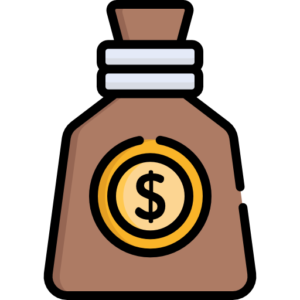Did you ever imagine that a “startup” which is built on a simple idea of cab-sharing can have a valuation of $70 Billion (more than General Motors and Ford) in a span of just 9-short-years?
The answer to the above question is UBER, a global behemoth and one of Silicon Valley’s most successful companies – and one of the most contentious.
The journey of Uber is not short of being exceptional and its success journey is one case study that is being taught in every business school.
So, let’s have a look at the SWOT Analysis of UBER and check out what internal and external factors led to the growth of the company.
SWOT Analysis of UBER
 Strengths oF uber:
Strengths oF uber:
Strengths describe the factors that which the organization is good at and what separates it from its competitors.
–BRAND EQUITY: Over the past 9 years, Uber has managed to build a strong brand name in the market. Its one of the most recognizable and respected brand across the world, which in a way helps the company in expanding to newer geographies easily.
–TECHNOLOGY: Uber’s core is its technology, one needs to use the Uber app to avail its service. It is also known as a tech company and not just a ride-hailing company alone. To make the app user-friendly and glitch-free, the company needs to have a strong technological backend. Uber boasts a wide pool of tech talent who are working day and night to improve the app experience for its users.
–STRONG PARTNER ECOSYSTEM: Uber has millions of driver partners working with it and that is one of its biggest strength. The supply of cabs is much more than the demand and that’s the biggest strength of the company that it enjoys over its competitors.
–USER INTERFACE AND USER EXPERIENCE: In this digital world, a large number of companies lose customers just because of their not so friendly user interface and experience. That’s one thing Uber has taken care of in its app. Its easy user interface and superior experience are one of the reasons for the success of Uber. Uber tweaks its app ( look and feel) basis the region they are operating in.
–SOMETHING FOR EVERYBODY: Uber provides its service for people from every walk of life, Uber has Uber Go, Uber Premium, Uber XL, Hire Go etc which targets different customer segments and customer needs and are priced accordingly.
–DIVERSIFICATION: Uber has not confined its business to just being a ride-hailing company, it has also forayed into food delivery (Uber Eats), shipping (Uber freight), renting an easy-to-use electric assist bike (Uber Bike) etc. Diversification is a much-needed strategy for any business and Uber has been successful in doing that.
 WEAKNESSes of UBER:
WEAKNESSes of UBER:
Weaknesses stop an organization from performing at its optimum level. They are areas where the business needs to improve to remain competitive:
–NEGATIVE PR/CONTROVERSIES: Uber has been plagued by a long list of scandals, ranging from reports of sexual harassment to aggressive strategies to take down the competition. The company has failed to take control of such situations, which in a way resulted in hampering the image of the brand.
 THREATS FOR UBER:
THREATS FOR UBER:
Threats refer to factors that have the potential to harm an organization in the future. Given the fact, threats give a brand a far-sighted view about the problems that the brand is likely to face in the future, it is one of the most important factors in the SWOT Analysis of Uber
–COMPETITIVE PRESSURE: Intense competition from companies like OLA, DIDI, GRAB, LYFT etc is one of the biggest threat for the company. Different geographic locations have their own local players and entering those markets by fighting off those local players has been a major challenge for the company.
–GOVERNMENT REGULATIONS: Government regulations have also been a major roadblock in the working of the company. The primary point of disagreement between cab aggregators and government regulators is about their legal status and whether they should be treated as conventional taxi companies or as IT companies.
 OPPORTUNITIES for uber:
OPPORTUNITIES for uber:
Opportunities refer to the factors which the organization can use to its favor to grow its market share, sales, brand recognition etc. It’s the second most important factor in
–EXPANDING TO OTHER/NEWER GEOGRAPHIES: There is still a lot of countries that UBER needs to expand to. The company needs to zero down the countries that they want to expand to and then apply all their efforts to make that launch a success.
–OTHER EXTERNAL FACTORS: There are a no. of external factors like rising traffic, bad public transportation services, lack of parking spaces, growing income of consumers etc that are acting in the favor of the company. All these factors pose great opportunities for the brand to grow in the future.
Conclusion
There are a number of challenges that Uber faces but still, it’s the strong brand equity, current market position, and the opportunities that pose a strong growth in the future for the brand.
This concludes the SWOT analysis of UBER.
Related articles:
Check out the BCG Matrix of Coca-Cola and SWOT analysis of Coca-Cola and Marketing mix of Coca-Cola
Learn more about the Swot analysis of Amul
Check out the swot analysis of Samsung
Explore more about SWOT analysis of KFC
Read more about the SWOT analysis of Mcdonald’s
Check out the SWOT Analysis of Toyota
Check out the swot analysis of Patanjali
Check out the SWOT Analysis of Netflix
Read more about the swot analysis of Walmart
Read more about the swot analysis of Pepsi, Marketing mix of Pepsi and BCG Matrix of Pepsi

 Strengths oF uber:
Strengths oF uber: WEAKNESSes of UBER:
WEAKNESSes of UBER: THREATS FOR UBER:
THREATS FOR UBER: OPPORTUNITIES for uber:
OPPORTUNITIES for uber: